There are a lot of really great smartphones on the market today. With various manufacturers competing for their slice of the smartphone market, there are a lot of factors to consider when shopping for one of these high-end phones. Although some consumers may find the myriad of options confusing or overwhelming, we find it exciting. After all, competition leads to better devices and features and we’re the benefactors.
In this product showcase, we’ll take a closer look at three of the hottest phones currently on the market: the HTC One, Samsung Galaxy S 4, and LG Optimus G Pro. Not to leave all other phones out in the cold, we’ll also consider a few additional superphones that have some standout features and are just rolling out to retail now, to give this trio even more competition.
HTC One, Samsung Galaxy S 4, and LG Optimus G Pro, each screen is set to 50% brightness
Certainly hardware specifications are a key feature to compare when looking at a smartphone, but software also makes a big difference in usability of a device and to help it stand out among the crowd. While two phones may have comparable hardware and run on a similar version of Android, the additional software features are much more unique to a particular phone and manufacturer.
We’ll dive into the unique software features of each phone in the coming pages but first, let’s compare the hardware specifications of the HTC One, Samsung Galaxy S 4, and LG Optimus G Pro side-by-side. Be sure to journey on to our full reviews of each device as well; just hit the product links at the top of the table...
| Processor | 1.7GHz quad-core Snapdragon 600 | 1.9 GHz quad-core Snapdragon 600 | 1.7GHz quad-core Snapdragon 600 |
| Memory | 2 GB DDR2 | 2GB RAM | 2 GB RM |
| Storage | 32GB or 64GB | 16GB or 32GB | 32 GB |
| microSD slot | No | Yes | Yes |
| Operating System | Android 4.1.2 | Android 4.2.2 | Android 4.1.2 |
| Display | 4.7 inch, Full HD 1080p, 468 PPI | 5 inch Full HD Super AMOLED (1920 x 1080) display, 441 ppi | 5.5-inch Full HD (1920 x 1080) IPS Display |
| Cameras | Front: 2.1 megapixel Rear: HTC UltraPixel | Front: 2 megapixel Rear: 13 megapixel | Front: 2.1 megapixel Rear: 13 megapixel |
| Size and weight | 5.4 X 2.7 X 0.37 inches 5 ounces | 5.4 x 2.7 x 0.3 inches 4.6 ounces | 5.91 x 3.0 x 0.37 inches 6.14 ounces |
| Battery | 2,300 mAh | 2,600 mA | 3,140 mAh |
| Carrier availability | AT&T Sprint T-Mobile | AT&T Cricket C Spire MetroPCS Sprint T-Mobile US Cellular Verizon Wireless | AT&T |
| Price | $99 on Contract | $149 on Contract | $59 on Contract |
As you can see from the chart above, the hardware features of each of these phones is very comparable. Samsung’s Galaxy S 4 edges out the competition by a hair in terms of processor speed. The S 4 is also the lightest phone of the three. LG’s Optimus G Pro takes the cake in terms of having a larger 5.5-inch display and a larger battery.
The HTC One may not “win” any of the hardware comparisons, standing out compared to the other phones in this roundup, but it doesn’t fall behind either. HTC incorporates a number of unique features in the HTC One that help this phone stand apart. In fact, although HTC doesn’t get as much media attention or buzz as the Galaxy S 4, the One has all of the features it needs to give Samsung some excellent competition.
The HTC One features a full-metal, zero-gap unibody design. This design gives the phone a very rich look and feel. Held in your hand, the phone feels solid—more solid than most of the plastic phones we’re accustomed to holding. This design comes with a bit of extra weight, but unless you’re examining the actual reported weight in the chart on the previous page, you probably won’t notice a huge difference between the HTC One and other phones. What you will notice is the solid design and rich feel.
HTC has partnered with Beats Audio to deliver a better sounding audio experience on the One than you’ll find on other smartphones. The HTC One features HTC BoomSound which combines front-facing stereo speakers with dedicated amplifiers and Beats Audio integration. During our hands-on testing of the HTC One, we were very impressed with the front-facing speakers found on the HTC One. These speakers sounded significantly better than most of the run-of-the-mill speakers we’ve seen on other smartphones.
When you power on the HTC One, you’ll notice the main home screen features HTC BlinkFeed. This feature is designed to pull content from various sources into a single feed. BlinkFeed is customizable letting you select content from various news sources, social media accounts, your calendar, photos, TV listings, and much more. BlinkFeed does a good job at pulling content from various sources and displaying it in a visually pleasing manner. However, you cannot disable BlinkFeed which is a drawback in our opinion. If you don’t like BlinkFeed, the best thing you can do is select a different home screen as your main home screen.
Another key differentiating point with the HTC One is the all new HTC UltraPixel Camera and HTC Zoe. This camera features a 4 megapixel sensor that HTC claims is capable of capturing 300% more light than most leading 13 megapixel cameras. This is possible because the sensor on the One actually has a larger area per pixel. Although a 4 megapixel sensor may sound small in comparison to most of today’s high-end smartphone cameras, the camera is actually quite impressive. In addition, HTC includes a number of high-end features which make this camera even better such as an f/2.0 aperture and optical image stabilization technology.
HTC's BlinkFeed as see on the primary home screen (left).In addition to BlinkFeed, the One's UltraPixel camera and BoomSound enable unique features you won't find on other phones.
Our tests of the UltraPixel Camera and HTC Zoe revealed impressive results. In addition to crisp, quality images, Zoe enables unique features such as “live photos” that you won’t get on other phones. These “live photos” capture a three second video of the moment. You can then freeze a single frame and convert it to an image or share the short video clip. Zoe also enables editing features and effects that you’d expect from a high-end camera such as Always Smile, Skin Smoothing, Red Eye Removal, and much more. Although the images captured with HTC’s UltraPixel Camera may not have the same resolution as other camera phone images, HTC definitely proves megapixels aren't the only thing to consider when comparing the quality of images captured with a smartphone.
HTC also included a feature known as Sense Voice with the HTC One. Sense Voice is designed to help provide clear conversations even in loud, crowded environments. It utilizes the One’s dual built-in microphones that can detect loud ambient noise. When loud ambient noise is detected, the phone dynamically boosts the in-call voice to compensate. During our tests with this phone, we were impressed with the call quality thanks to Sense Voice. HTC also uses the dual microphones to provide clean, rich sound when capturing HD video.
Two of the biggest drawbacks to the HTC One are the fact that it doesn’t include a microSD slot or a user-replaceable battery. HTC offers the One with 32GB and 64GB of built-in storage, though the 64GB model is only available through AT&T. If you can get past these two sticking points, the HTC One is an excellent phone that doesn’t get enough credit in the market.
The HTC One is currently available through three of the top four carriers in the United States (AT&T, Sprint, and T-Mobile) for $99 on contract.Verizon Wireless has announced plans to carry the HTC One starting August 22.
If there’s a single brand that comes to most people’s mind when thinking of a high-end Android smartphone, it’s Samsung’s Galaxy line of smartphones. The buzz that surrounded the launch of the Galaxy S 4 as the company’s latest flagship smartphone and the fact that Samsung has reportedly sold more than 20 million Galaxy S4 devices reveals Samsung’s tremendous popularity.
Samsung includes a number of sensors in the Galaxy S 4, including proximity and gesture sensors. With these sensors, you get the ability to control the phone without touching the screen, which is something most phones can’t claim. For example, with Air View you can preview photos, files, links, and text by hovering your finger over the phone. Using Air Gesture, you can skip songs, check notifications, or even answer your phone by waving your hand.
You’ll also find a Multi Window feature on the Galaxy S 4 that enables you to use two applications side by side. Multi Window is compatible with a number of different applications including Chrome, Email, Gallery, Gmail, Internet, Maps, Messaging, Polaris Office, S Memo, Talk, and YouTube. When you open two applications using Multi Window, they will each utilize half of the screen. A bar between the apps lets you drag to show more of one window and less of the other. You can also swap which app is on top or bottom, switch to view one application in full screen mode, or close an application.
We appreciate that the Multi Window functionally found on the Galaxy S 4 is compatible with a number of different applications. The LG Optimus G Pro also has multitasking functionality, but it’s implemented differently. We’ll discuss this more on the next page, but the key differences are in application support and layout. The Galaxy S 4 supports more applications using Multi Window than the Optimus G Pro supports using QSlide but the Optimus G Pro gives you additional layout options than Multi Window.
Given the number of people who bring their own devices to work, corporate IT departments will appreciate the fact that Samsung has included a feature known as KNOX on the Galaxy S 4. KNOX partitions the phone into personal and work-related spaces thereby making it possible to keep your personal data completely separate from your professional files.
Samsung's Galaxy S 4 features Multi Window, S Translator, and a variety of motion and gesture controls.
Samsung includes a number of S-branded apps with the Galaxy S 4 including S Memo, S Health, S Translator, S Voice, Samsung Link and Watch On. S Health enables a link between the Galaxy S 4 and health-related accessories such as a heart monitor and scale. Frequent travelers will appreciate S Translator which is capable of text-to-speech and speech-to-text translations of many popular languages. This handy app can also scan an image using the Galaxy S 4’s camera and translate the text after using optical character recognition.
In an attempt to set its camera apart from other smartphones, Samsung incorporated a number of new shooting modes including Sound & Shot, Drama, Animated Photo and Eraser. Sound & Shot lets you attach sound clips to photos. Drama captures a burst of 100 images and then combines the best images where the subject is not overlapping to show the subject in multiple positions within a single photo. Animated photo creates a short animated GIF using a burst of photos. With Eraser mode, you can remove objects from the background. This feature is particularly useful if you’re taking a picture of your friend standing in front of the Eifel Tower and someone walks into the photo. Using the Eraser, you can remove that person to see the complete background. Samsung also lets users put themselves in photos by using the front and rear cameras simultaneously.
Samsung also offers the Galaxy S4 Active, which has many of the same hardware and software features as the Galaxy S4 but in a more rugged package that is dust and water resistant. The Galaxy S4 Active also includes an Aqua Mode which lets you take pictures under water.
The Samsung Galaxy S 4 has the widest availability of the three smartphones we’re examining in this article. You’ll find the Galaxy S 4 at AT&T, Cricket, C Spire, MetroPCS, Sprint, T-Mobile, US Cellular, and Verizon Wireless.
When placed next to the HTC One or Samsung Galaxy S 4, LG’s Optimus G Pro looks significantly larger. Indeed, the Optimus G Pro is a bigger device because it has a larger, 5.5-inch Full HD (1920 x 1080) IPS display. Sometimes referred to as a phablet due to the fact that its size blurs the lines between a smartphone and a tablet, the larger screen found on the Optimus G Pro enables some great features including QSlide.
QSlide is a multitasking mode found on the Optimus G Pro that enables you to view up to three applications at the same time. Whereas Samsung’s Multi Window simply splits your home screen so you can view two applications simultaneously, QSlide lets you move and resize QSlide apps and change their transparency. In terms of multitasking functionality, we prefer the QSlide implementation over the Multi Window option. The only drawback to QSlide is the limited app functionality. Currently, you can use QSlide only with four applications: Videos, Note Pad, Calendar, and Calculator. Even with the limited app support, it’s important to keep in mind that any app can run in the background of these QSlide apps.
LG’s QuickMemo application found on the Optimus G Pro lets you capture screen shots, write on any screen, create notes, and share images you’ve created. This application is useful for collaborating with colleagues on a project or sharing directions with a friend. During our tests, we found this application to be useful though we would have appreciated a stylus in order to make even greater use of the app.
The Optimus G Pro comes with a number of unique camera modes that let you take advantage of the phone’s 2.1 MP Full HD front-facing camera and a 13 MP full HD rear-facing autofocus camera with full HD video recording capabilities. Some of the popular shooting modes include Cheese shutter, Intelligent Auto, HDR, Panorama, Burst Shot, and Beauty Shot modes. With Time Catch Shot, the camera will capture five sequential pictures before the shutter key is touched to help ensure you don’t miss an important moment.
Quick Memo (left), QSlide (right)
An image captured using VR Panorama on the LG Optimus G Pro.
One of the most unique camera features found on the Optimus G Pro is VR Panorama. This feature lets you capture photos in every direction and combines these images into a single panoramic image. This panoramic image is different from traditional panoramic images because it allows you to get more of a 360-degree like view using both the horizontal and vertical axis.
When you want to share a moment with a friend or put yourself in the action, the Optimus G Pro’s Dual Recording feature lets you capture video from both cameras simultaneously.
Although the Optimus G Pro is a great phone with a lot of really cool features, the fact that it is exclusively available through AT&T is a bit of a drawback because it limits the phone’s appeal to customers tied to other networks. With that said, if you’re an AT&T customer or are willing to switch carriers, the Optimus G Pro definitely deserves its spot in this super phone roundup.
Motorola X
Motorola’s X smartphone has received a good amount of buzz in the media over the past few months. This phone has hardware specifications that are on par with or slightly behind today’s top phones. Although it may not have the highest end hardware on some levels, the Motorola X has a few features that will deliver a user experience unlike other phones.
More specifically, the X comes with Natural Language and Gesture control engines. By saying, “OK Google Now,” the phone will respond to your demands. After using a training process, the phone will respond to you and you alone. The phone features three microphones to enable better vocal recognition.
To enable the always on voice control functionality and other unique features of the Motorola X while still promising good battery life, Motorola has developed a proprietary system architecture known as the X8 Mobile Computing System. This system includes four graphics processor cores, two application processor cores, and two low-power cores. The Motorola X8 Mobile Computing System contains a Qualcomm Snapdragon S4Pro processor (1.7GHz Dual-Core Krait CPU, Quad-Core Adreno 320 GPU), a natural language processor, and a contextual computing processor.
The Motorola X has a number of other unique software features as well. For example, the Quick Capture feature helps ensure you never miss an important photo moment—simply twist your wrist and the camera will be open and ready to capture images. The Motorola X will also feature Smart Actions which enables the phone to be contextually aware and anticipate a user’s needs.
Motorola is giving AT&T customers the ability to customize their Motorola X using Moto Maker. With Moto Maker, you can select the colors of the phone including the front, back, and accents as well as customize the wallpaper and add a name or short message to the back of the phone. Motorola promises the phone will be assembled in the USA and shipped to you in four days or less. Currently, the Moto Maker customization option is an AT&T exclusive. However, it’s likely other US carriers will get the option in the future.
We’re anxious to get our hands on a Motorola X to see if it lives up to the hype. Certainly the phone’s experiential features like voice control have the potential to make this phone stand out among the crowd.
Nokia Lumia 1020
Users who are serious about getting a top-notch camera in their smartphone will want to consider Nokia’s Lumia 1020. This phone features 41 megapixels of resolution—far beyond what you’d see in any typical smartphone.
On the hardware front, the Lumia 1020 features a 1.5GHz dual-core Snapdragon processor, 2GB of RAM, and 32GB of internal storage. Although these are adequate specifications for a device running on Windows Phone 8, they’re very similar to previous Lumia devices. The camera found on the Lumia 1020 is what really sets this phone apart.
In addition to a 41 megapixel sensor, the Lumia 1020’s camera features optical image stabilization, a f/2.2 6-element lens, and a LED + Xenon flash combination. The Pro Camera lens gives shutterbugs the ability to adjust white balance, ISO, exposure, and other manual controls. During our tests with this phone, we were impressed by the quality of images captured in a variety of environments.
LG G2
LG's upcoming G2 is also a worthy mention. Although this phone isn’t available for purchase yet, it may very well be worth waiting for, especially if you want the largest Android flagship phone available. This phone will feature a large, 5.2-inch IPS display with a 1080p resolution at 423 pixels per inch. You’ll also find a 2.26GHz Snapdragon 800 processor inside this phone. In terms of graphics, the G2 will feature an Adreno GPU clocked at 450MHz (compared to 400MHz in other popular phones of today).
Other noteworthy features of the G2 include a 3,000mAh battery and a 13 megapixel rear camera. Unique software features include KnockON (tap the phone’s display twice to power on the phone), QuickMemo note-taking software, Answer Me (automatically answers a call when the phone is put to your face), Slide Aside for better multi-tasking, and Guest Mode.
LG hasn’t revealed pricing for the G2. The phone is expected to be available through all four major US carriers in the next two months.
| Motorola Moto X | Nokia Lumia 1020 | LG G2 | |
| Display | 4.7 inches; 1280x720 | 4.5 inches; 1280x768 | 5.2 inches; 1080 x 1920 |
| CPU | 1.7GHz dual-core Qualcomm Snapdragon S4 Pro | 1.5GHz dual-core Qualcomm Snapdragon S4 | 2.26 GHz Qualcomm Snapdragon 800 Quad-Core Processor |
| RAM | 2GB | 2GB | 2GB |
| Storage | 16GB/32GB | 32GB | 16GB/32GB |
| microSD | No | No | No |
| Camera(s) | 2MP front; 10MP rear | 1.2MP front; 41MP rear | 2.1MP front; 13MP rear |
| Battery | 2,200 mAh | 2,000 mAh | 3,000 mAh |
| OS | Android 4.2.2 | Windows Phone 8 | Android Jelly Bean 4.2.2 |
| Dimensions | 5.09 x 2.57 x 0.41 inches | 4.13 x 2.81 x 0.41 inches | 5.45 x 2.79 x 0.35 inches |
| Carrier(s) | AT&T Sprint T-Mobile Verizon Wireless U.S. Cellular | AT&T | AT&T Sprint T-Mobile Verizon Wireless |
| Price | $199/TBD | $249 on Contract | TBD |
The smartphone market is ever changing, with manufacturers constantly trying to one-up the other. Still, three of the top phones mentioned in this article have been available for a couple months and they’re still among the best Android handsets on the market today both in terms of hardware specification, unique software features and usability.
Just comparing a specification chart of the HTC One, Samsung Galaxy S 4, and LG Optimus G Pro, it may be hard to choose from one phone over the other unless your wireless carrier narrows the choice for you. Each of these phones have their individual strengths and weaknesses and we’ve tried to point them out in this round-up. At the end of the day, you’ll have to decide which of these software features is most important to you.
As always, we’re excited to get our hands on the upcoming Motorola X and the LG G2, both of which look like impressive phones in terms of user experience. Stay tuned for more details on each of these phones once we get some hands-on time with them.
To wrap things up, we’d like to provide a quick summary of the greatest strengths and weaknesses of the HTC One, Samsung Galaxy S 4, and LG Optimus G Pro:
| HTC One | Samsung Galaxy S 4 | LG Optimus G Pro |
|
|
|
|
|
|
FROM : http://hothardware.com
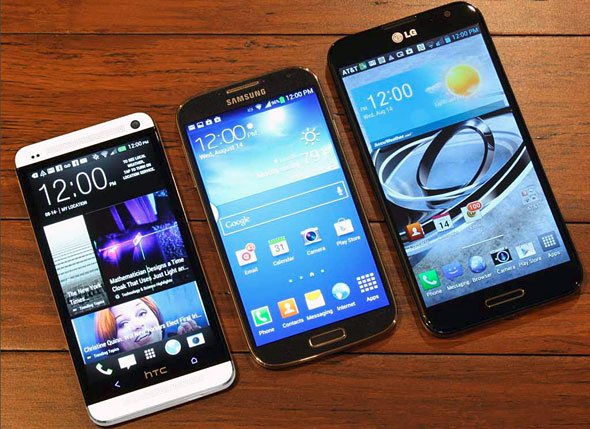
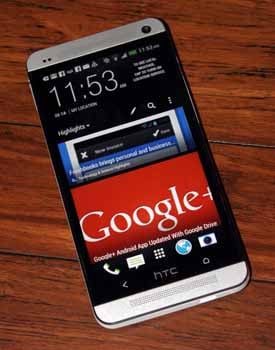


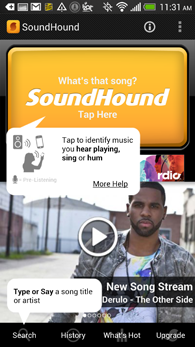
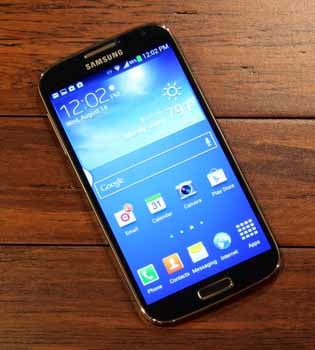
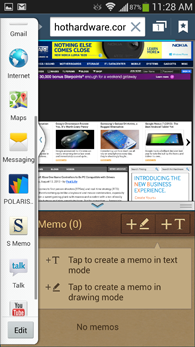
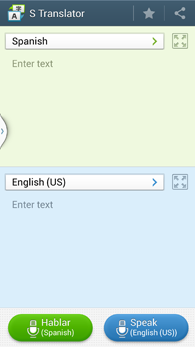

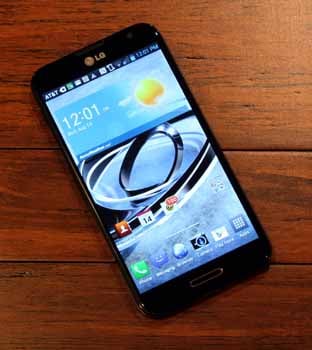
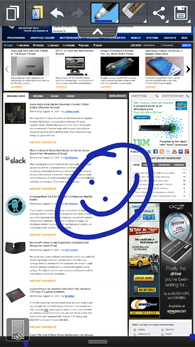
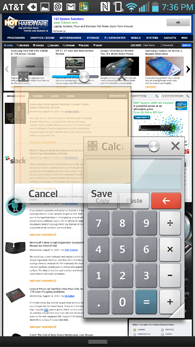

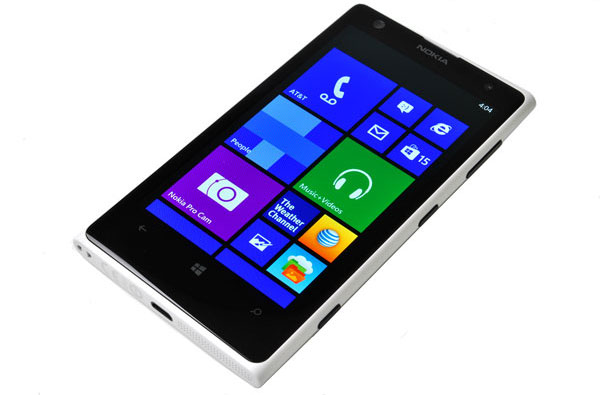
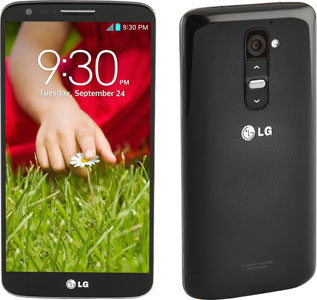


Tidak ada komentar:
Posting Komentar